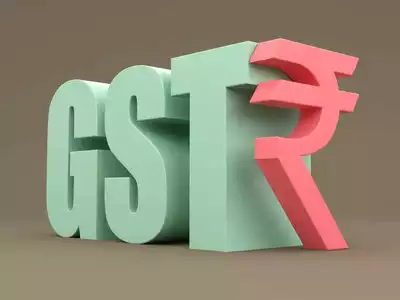Context:
GST collections surged to a record ₹2.10 lakh crore, representing a notable 12.4% year-on-year growth.
More on News
- After considering refunds, April 2024’s net GST revenue amounts to ₹1.92 lakh crore, a noteworthy 15.5% growth from the previous year.
- Previously, the highest-ever GST collection figure stood at Rs 1.87 lakh crore in April 2023.
Reasons given for increased GST collections:
- A portion of the increased collections can be attributed to the typical upswing in activity towards the end of the financial year.
- Relentless focus on GST audits by both central and state GST authorities has compelled businesses to enhance their compliance efforts.
- Strict penalties and enforcement actions against evaders have acted as deterrents.
- Increased electoral expenses by political parties and a modest recovery in rural consumption
About Goods and Services Tax (GST)

Introduction to GST
- GST is the Pan India single indirect tax based on the idea of “ONE NATION ONE TAX”.
- It’s an outcome of merging major Central and State indirect taxes.
- Destination-Based Taxation: It is a destination-based tax imposed on the consumption of goods and services nationwide, creating a unified common market for the country.
- A destination-based tax is levied in the state where goods or services are consumed rather than where they are produced.
- Implementation: Implemented from July 1, 2017, under the 101st Constitutional Amendment Act (Article 246A).
Incorporation of Taxes
- At the Central level, GST incorporated Central Excise Duty, Additional Excise Duty, Service Tax, Additional Customs Duty (Countervailing Duty), and Special Additional Duty of Customs.
- At the State level, it incorporated State Value Added Tax/Sales Tax, Entertainment Tax, Octroi and Entry Tax, Purchase Tax, Luxury Tax, Taxes on lottery, betting, and gambling, etc
Dual GST
- It operates as a dual GST system, with both the Centre and the States imposing taxes on a shared base.
- The Centre’s tax is called Central GST (CGST), while the State’s tax is called State GST (SGST).
Treatment of Imports
- Imported goods or services are treated as interstate supplies and are subject to Integrated Goods & Services Tax (IGST) along with applicable customs duties.
Tax Slabs and GST Council
- GST is implemented at four rates: 5%, 12%, 18%, and 28%, with the specific items falling under each slab determined by the GST council.
- CGST, SGST, and IGST rates are agreed upon jointly by the Centre and the States, as recommended by the GST Council.
Advantage of GST
- The tax base has expanded to cover a wider range of goods and services, resulting in increased tax collection.
- It facilitated the creation of a unified market across India, reducing compliance costs.
- It has enhanced manufacturing and distribution efficiency by eliminating tax cascading.
- It has also reduced litigation, allowing entrepreneurs to focus more on their businesses.
- It reduces administration costs, enhances transparency, and improves overall efficiency.
- Taxes on imported goods have been reduced by 5-10%.
Challenges of GST
- States object to the imposition of additional cess and surcharge, as the Centre retains exclusive authority over the cess and surcharge tax pool.
- SGST and CGST input credits cannot be interchanged. Any input credit balance of CGST, after setting off tax liability towards CGST, cannot be used to set off against SGST.
- Manufacturing states face considerable revenue losses, leading to concerns regarding compensation for these losses.
- Some states seek greater autonomy in shaping GST policies, expressing concerns about the decision-making process in the GST Council.
- It is ONE NATION ONE TAX only on paper and not in a practical sense due to the presence of multiple tax slabs.
Way Forward
- Equitable compensation for manufacturing states.
- Regularly review and rationalise tax rates.
- Streamlining registration processes.
- Minimizing reliance on additional cess.
- Promoting GST council dialogue for effective GST implementation.
About GST Council
- Key Responsibilities: Recommends tax rates, period of levy of additional tax, principles of supply, exemption thresholds, and special provisions for states.
- Constitutional Mandate: Established under Article 279A of the Constitution to administer and govern GST.
Composition:
- Chaired by the Union Finance Minister, with state government-nominated ministers as members.
- The center holds 1/3rd voting power, while states collectively hold 2/3rd.
- Decision Making: Decisions require a 3/4th majority, ensuring consensus among members.
- Dispute Resolution: The council devises mechanisms for resolving disputes arising from its recommendations.

